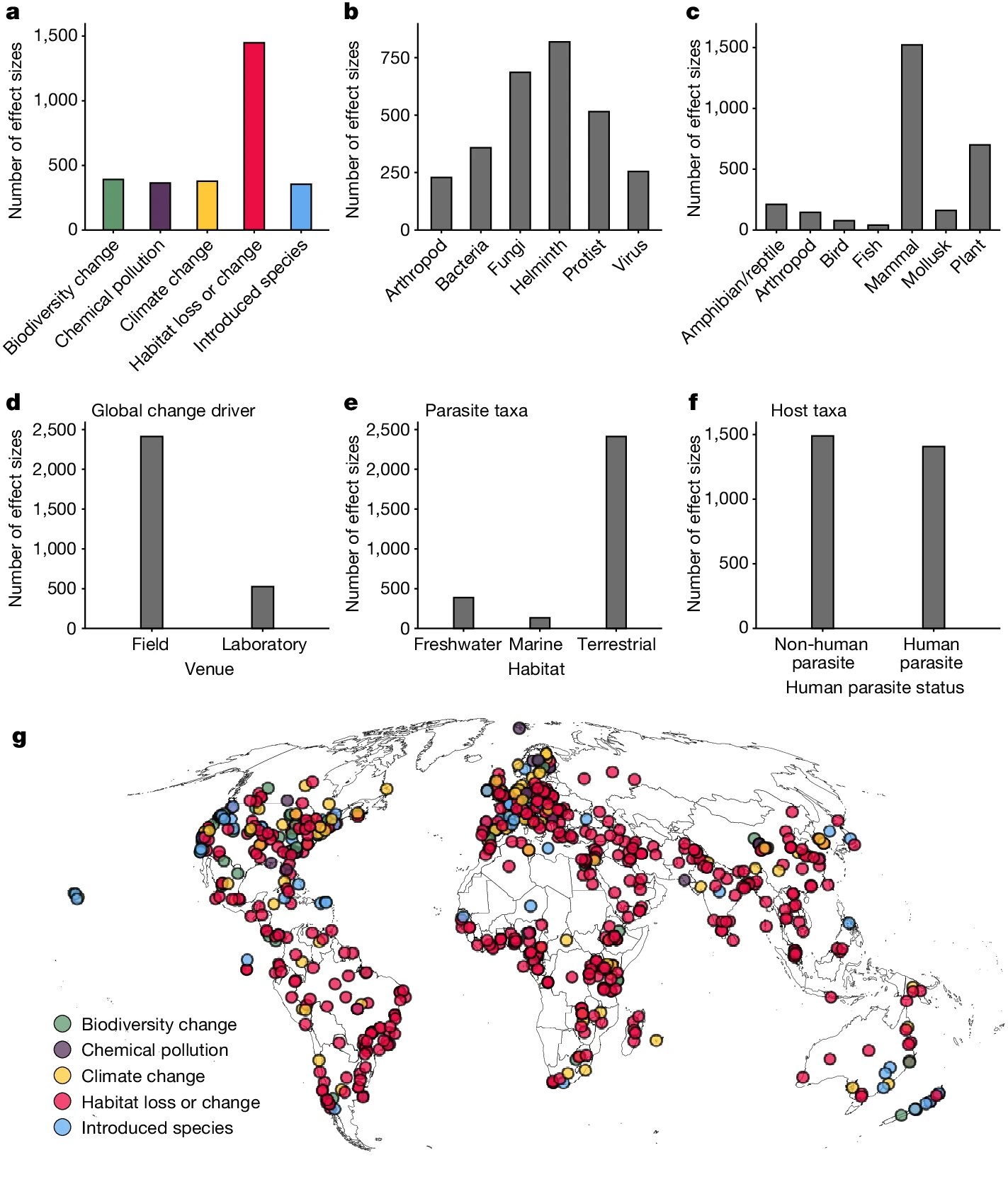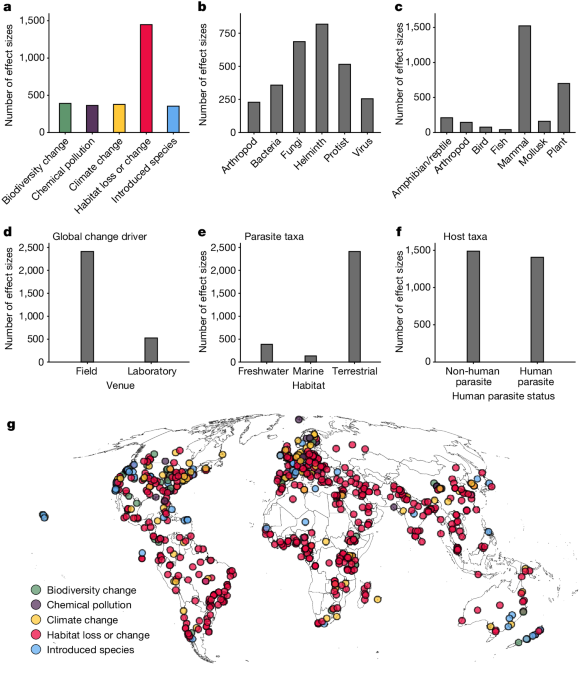
In recent years, there has been growing concern about the impact of human activities on the risk of infectious diseases. A new body of research suggests that global change drivers, such as biodiversity loss, chemical pollution, climate change, and introduced species, are contributing to the rise in emerging infectious diseases (EIDs) in various organisms around the world. This includes humans, animals, and plants.
According to a meta-analysis of nearly 3,000 observations across almost 1,500 host-parasite combinations published in Nature, biodiversity loss, chemical pollution, climate change, and introduced species are associated with increases in disease-related endpoints or harm. The study found that reducing greenhouse gas emissions (GHGs), managing ecosystem health, and preventing biological invasions and biodiversity loss could help to reduce the burden of plant, animal, and human diseases.
One potential explanation for the observed trends is the extinction of rarer mammals, such as white-footed mice. These animals have become more dominant in certain ecosystems due to human activities like habitat destruction and fragmentation. As a result, they are increasingly becoming reservoirs for diseases that can spread to humans and other animals.
Climate change is another significant driver of disease risk. For instance, warmer temperatures may help malaria expand in Africa, while a decline in wildlife diversity could be boosting Lyme disease cases in North America. The study also found that urbanization decreases the risk of infectious diseases, likely due to improved sanitation and public health infrastructure.
It is important to note that these findings do not imply causation but rather suggest a correlation between global change drivers and the risk of infectious diseases. Further research is needed to fully understand the underlying mechanisms and develop effective strategies for mitigating the risks associated with these drivers.
Sources:
- Nature (2024). DOI: 10.1038/s41586-024-07380-6
- Georgetown University


